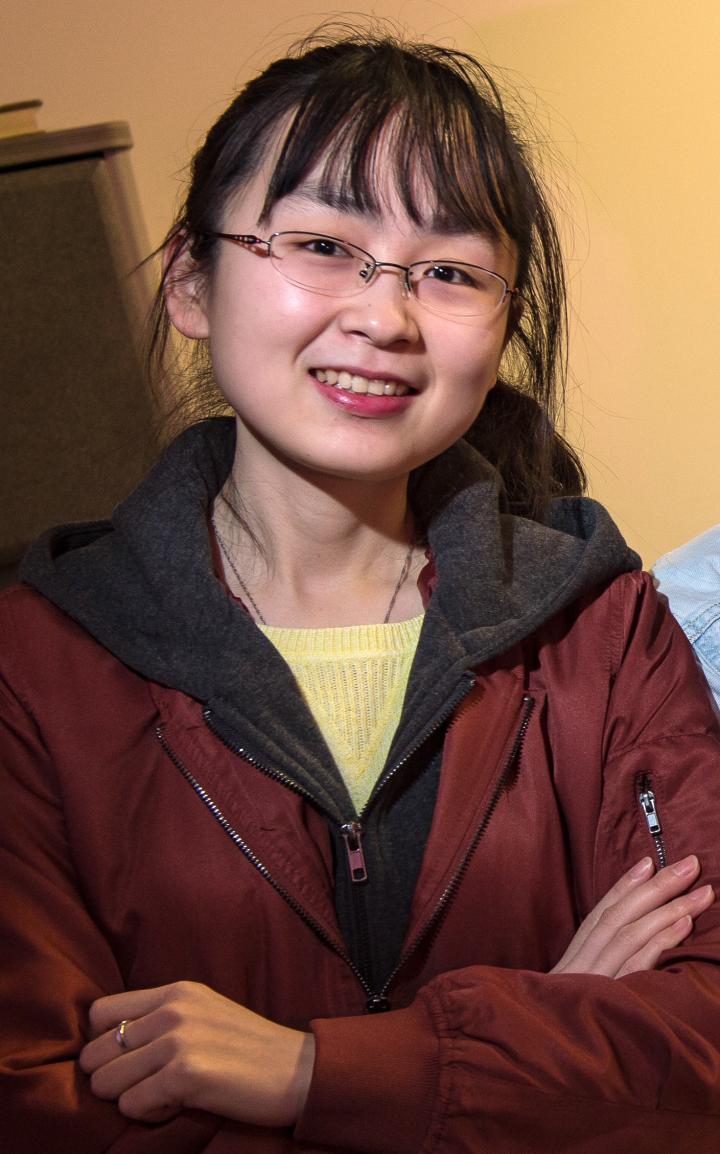Alvarez, Tao win National Science Foundation RAPID grant to upgrade filter technology

Credit: Jeff Fitlow/Rice University
HOUSTON – (April 23, 2020) – Rice University researchers plan to reconfigure their “trap and zap” wastewater-treatment technology to capture and deactivate the virus that causes COVID-19.
Rice civil and environmental engineer Pedro Alvarez and bioscientist Yizhi Jane Tao have won a National Science Foundation (NSF) RAPID grant to develop a “novel approach for selective adsorption and photocatalytic disinfection” of SARS-CoV-2.
Their chemical-free nanotechnology, introduced earlier this year as a way to kill bacterial “superbugs” and degrade their antibiotic resistance genes in wastewater, would employ graphitic carbon nitride customized at the molecular level to selectively absorb viruses and then disable them by activating nearby catalysts with light.
Alvarez said the team aims to develop a system that is fast, efficient and reliable “under realistic scenarios.”
“COVID-19 might be a dress rehearsal for even more lethal infectious diseases that are very difficult to control,” said Alvarez, director of the Rice-based, NSF-backed Nanosystems Engineering Research Center for Nanotechnology-Enabled Water Treatment (NEWT). “We need to enhance the capacity and resiliency of multimedia treatment processes — especially air filtration and wastewater disinfection — to protect public health.
“SARS-CoV-2 has been found in air ducts, suggesting it could spread through a building’s air conditioning system, and in stool, even from patients who have tested negative for COVID-19,” he said. “That suggests it could reach wastewater treatment plants, where it could survive for days.”
While the researchers will test their work in the lab on similar but less-virulent strains, they expect their trap-and-zap treatment approach will recognize coronaviruses that cause not only COVID-19 but also MERS and SARS, according to the project abstract.
Alvarez is the George R. Brown Professor of Civil and Environmental Engineering and a professor of chemistry and of chemical and biomolecular engineering. Tao is a professor of biosciences.
###
Read the abstract at https:/
This news release can be found online at https:/
Follow Rice News and Media Relations via Twitter @RiceUNews.
Related materials:
New nano strategy for superbugs: http://news.
Pedro Alvarez: https:/
Tao Lab: https:/
Images for download:
https:/
CAPTION: Yizhi Jane Tao. (Credit: Jeff Fitlow/Rice University)
https:/
CAPTION: Pedro Alvarez. (Credit: Tommy LaVergne/Rice University)
Located on a 300-acre forested campus in Houston, Rice University is consistently ranked among the nation’s top 20 universities by U.S. News & World Report. Rice has highly respected schools of Architecture, Business, Continuing Studies, Engineering, Humanities, Music, Natural Sciences and Social Sciences and is home to the Baker Institute for Public Policy. With 3,962 undergraduates and 3,027 graduate students, Rice’s undergraduate student-to-faculty ratio is just under 6-to-1. Its residential college system builds close-knit communities and lifelong friendships, just one reason why Rice is ranked No. 1 for lots of race/class interaction and No. 4 for quality of life by the Princeton Review. Rice is also rated as a best value among private universities by Kiplinger’s Personal Finance.
Jeff Falk
713-348-6775
[email protected]
Mike Williams
713-348-6728
[email protected]
Media Contact
Mike Williams
[email protected]
Original Source
https:/




